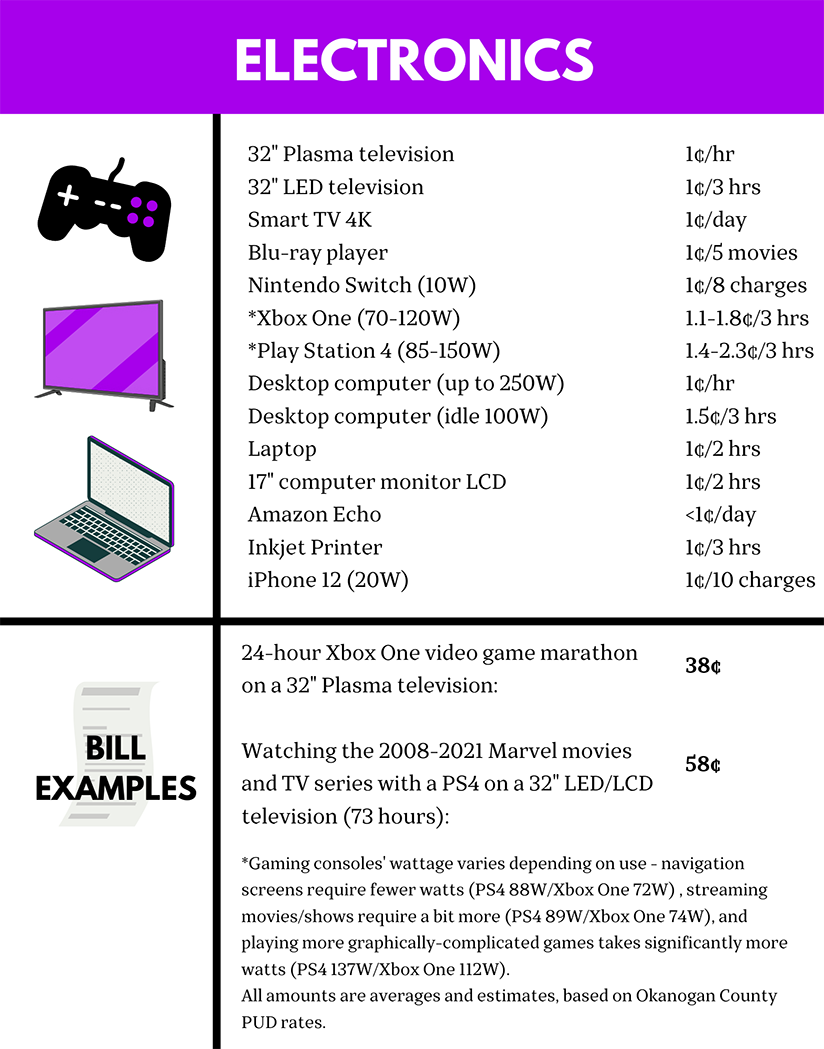This is Part 5 of 5 regarding the energy usage costs of common household items. The more we realize how much energy we use, the more we can find ways to save energy and save money!
Here’s one of the trickier charts we have so far – electronics. So much of it depends on the make/model and particular function of the item before we can really figure out how much energy it consumes.
Our first big note about electronics: Most of them STILL drain a little bit of energy when they are turned off but still plugged in. We call this “phantom” energy usage. To combat this, if you aren’t using your electronics much, don’t just turn them off – unplug them, too.
Streaming our favorite shows and movies is pretty popular, and how much energy it costs depends on two main factors: 1. What TV/screen are you using? 2. What device are you streaming with? Watching all 73 hours of the Marvel Cinematic Universe will cost you only a matter of pennies on a LED Smart TV with streaming services built in, but will cost you about $1 to watch it on a plasma TV through a gaming console.
Speaking of gaming consoles, here’s our second big note: The energy usage depends on the function. For example, just leaving the menu active on these will cost you at least a penny for every three hours. Streaming services are about 1.5 to 2 cents for every three hours. And playing graphically-complicated games will cost you at least 2 cents for every three hours on average.
But all told, electronics are typically not your main consumer of electricity in the house. If you are using plasma or older televisions (basically anything that isn’t LED) then that’s your biggest consumer. An LED television is about three times more efficient than plasma. Some desktop computers can slowly drain energy, so keep an eye on them as well.
Look into more energy usage information on our Energy Usage Costs webpage!
